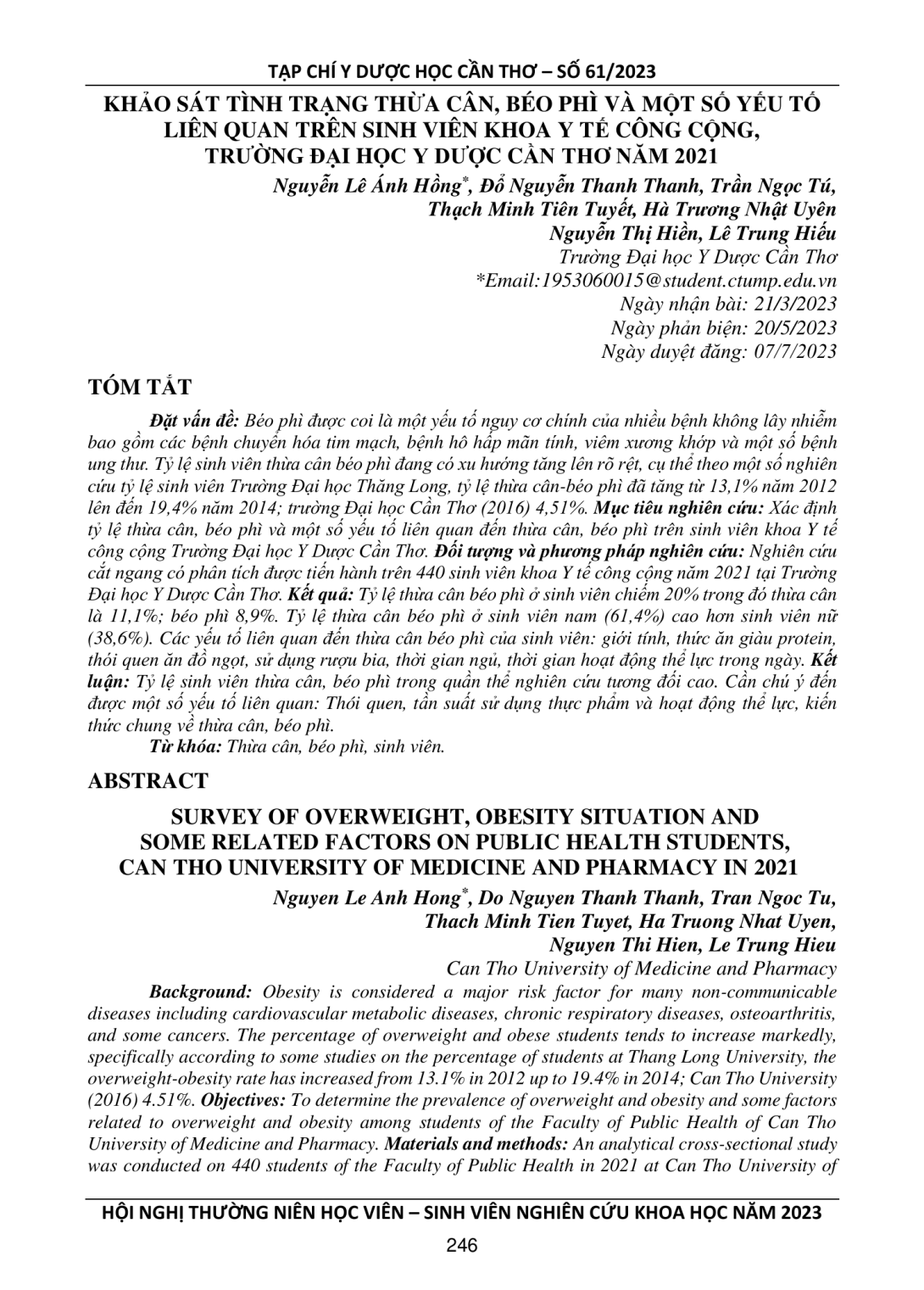
Xác định tỷ lệ thừa cân, béo phì và một số yếu tố liên quan đến thừa cân, béo phì trên sinh viên khoa Y tế công cộng Trường Đại học Y Dược Cần Thơ. Đối tượng và phương pháp nghiên cứu: Nghiên cứu cắt ngang có phân tích được tiến hành trên 440 sinh viên khoa Y tế công cộng năm 2021 tại Trường Đại học Y Dược Cần Thơ. Kết quả: Tỷ lệ thừa cân béo phì ở sinh viên chiếm 20% trong đó thừa cân là 11,1%; béo phì 8,9%. Tỷ lệ thừa cân béo phì ở sinh viên nam (61,4%) cao hơn sinh viên nữ (38,6%). Các yếu tố liên quan đến thừa cân béo phì của sinh viên: giới tính, thức ăn giàu protein, thói quen ăn đồ ngọt, sử dụng rượu bia, thời gian ngủ, thời gian hoạt động thể lực trong ngày. Kết luận: Tỷ lệ sinh viên thừa cân, béo phì trong quần thể nghiên cứu tương đối cao. Cần chú ý đến được một số yếu tố liên quan: Thói quen, tần suất sử dụng thực phẩm và hoạt động thể lực, kiến thức chung về thừa cân, béo phì.
Obesity is considered a major risk factor for many non-communicable diseases including cardiovascular metabolic diseases, chronic respiratory diseases, osteoarthritis, and some cancers. The percentage of overweight and obese students tends to increase markedly, specifically according to some studies on the percentage of students at Thang Long University, the overweight-obesity rate has increased from 13.1% in 2012 up to 19.4% in 2014; Can Tho University (2016) 4.51%. Objectives: To determine the prevalence of overweight and obesity and some factors related to overweight and obesity among students of the Faculty of Public Health of Can Tho University of Medicine and Pharmacy. Materials and methods: An analytical cross-sectional study was conducted on 440 students of the Faculty of Public Health in 2021 at Can Tho University of Medicine and Pharmacy. Results: The rate of overweight and obesity among students accounted for 20%, of which overweight was 11.1%; obesity 8.9%. The rate of overweight and obesity among male students (61.4%) was higher than that of female students (38.6%). Factors related to overweight and obesity of students: gender, high-protein foods, eating habits of sweets, alcohol use, sleep time, time of day physical activity. Conclusions: The percentage of overweight and obese students in the study population is relatively high. It is necessary to pay attention to a number of related factors: habits, frequency of food use and physical activity, general knowledge about overweight and obesity.
- Đăng nhập để gửi ý kiến
